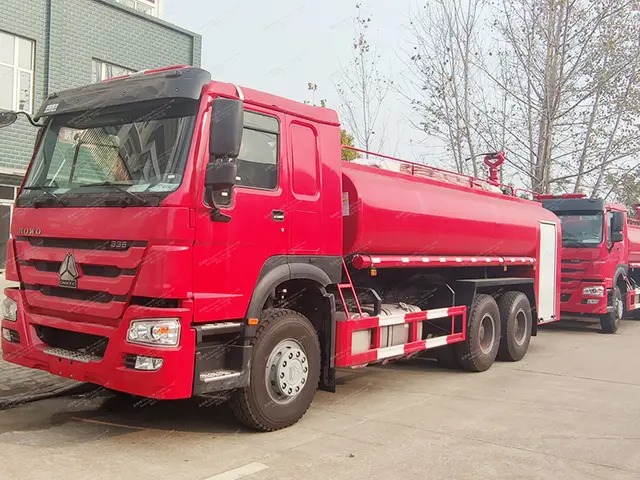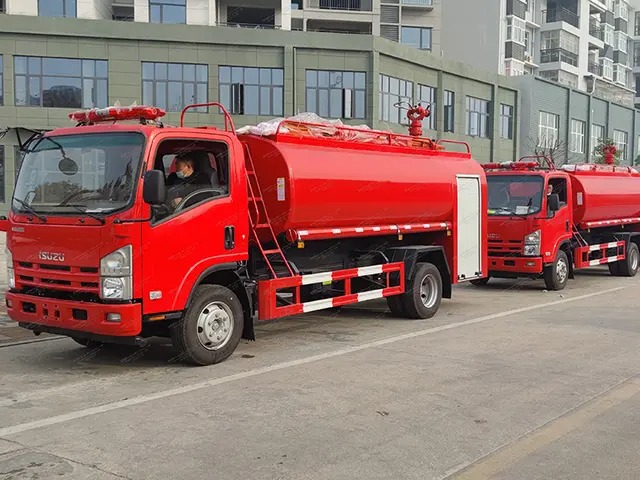


What Are The Leading Rescue Ambulance Brands in 2025?
Views: 210 Author: Site Editor Publish Time: 2025-09-16 Origin: Site









Introduction
The global healthcare and emergency response industry has undergone massive transformation in the past decade, and 2025 marks a defining moment for the rescue ambulance sector. With the rise of urbanization, climate emergencies, pandemics, and smart mobility technologies, demand for reliable, durable, and technologically advanced ambulances has never been higher. Today’s rescue ambulance brands must balance patient safety, speed, comfort, and innovation while also meeting stringent international health and transport standards.
In this article, we explore the leading rescue ambulance brands in 2025, analyze what makes them stand out, compare their strengths, and examine how their vehicles support first responders globally. Whether you are a healthcare administrator, an emergency fleet manager, or a technology enthusiast, this deep dive will help you understand which ambulance brands dominate the market in 2025 and why.
Global Rescue Ambulance Market Landscape in 2025
The rescue ambulance market in 2025 is shaped by three dominant forces: technological advancement, sustainability, and global health preparedness. Traditional vehicle manufacturers now collaborate closely with medical technology companies to deliver ambulances that act as mobile ICUs, equipped with telemedicine, AI-powered monitoring, and modular interiors.
Regions like North America and Europe remain at the forefront due to strict safety regulations and established EMS infrastructure, but Asia-Pacific and the Middle East are rapidly expanding, demanding high-capacity fleets that can withstand extreme conditions. Leading brands succeed not only by selling vehicles but also by providing lifecycle support, customization, and digital health integration.

The Criteria for a Leading Rescue Ambulance Brand
To understand what makes a brand truly “leading” in 2025, it is essential to look beyond simple market share. Modern rescue ambulance excellence is measured by:
Reliability & Safety Standards – Crash-tested bodies, advanced braking systems, and compliance with ISO and EN regulations.
Innovation & Technology – Telemedicine compatibility, electrification, AI-assisted navigation, and patient monitoring systems.
Customization – Ability to configure Type I, II, or III ambulances for specific regional and operational needs.
Sustainability – Adoption of electric or hybrid drivetrains to meet green fleet goals.
Global Service Network – After-sales support, spare parts availability, and training programs for operators.
These factors form the baseline for evaluating the most influential rescue ambulance manufacturers in 2025.
Top Rescue Ambulance Brands Dominating in 2025
1. Mercedes-Benz Emergency & Rescue Vehicles
Mercedes-Benz has consistently ranked among the top rescue ambulance brands thanks to its Sprinter and Vito models, which are globally recognized for their durability and customization. In 2025, Mercedes continues to dominate with:
Electric Sprinter Ambulances designed for urban rescue.
Advanced driver-assistance systems (ADAS) reducing accident risks.
Partnerships with European EMS providers for modular ICU configurations.
Mercedes-Benz remains the choice for high-performance fleets in Europe, Asia, and the Middle East.
2. Ford Transit Ambulance Solutions
Ford’s Transit line remains one of the most widely deployed rescue ambulance platforms worldwide. In 2025, Ford focuses heavily on:
Electrified Transit models to meet sustainability targets.
Strong chassis reliability suitable for both urban and rural terrains.
Cost-effective customization for developing countries.
Ford’s global distribution network ensures easy serviceability, making it a top choice for both government contracts and private EMS operators.
3. Toyota HiAce Emergency Ambulances
Toyota’s HiAce remains the most dominant rescue ambulance in Asia-Pacific and Africa. Known for its rugged reliability and lower operating costs, the HiAce is favored by governments and NGOs for disaster relief and rural healthcare missions.
In 2025, Toyota integrates hybrid drivetrains and introduces AI-driven fleet management solutions, making it a strong contender in emerging markets where cost and durability matter most.
4. Renault Master Rescue Ambulances
Renault’s Master platform is particularly strong in Europe and parts of South America. Its success in 2025 is driven by:
Compact, fuel-efficient engines suited for dense urban settings.
Ergonomically designed interiors for medical teams.
Affordable electric ambulance variants for green fleets.
Renault positions itself as a reliable mid-market brand that balances performance with affordability.
5. Nissan NV350 & Caravan Ambulances
Nissan is another Asian giant shaping the rescue ambulance segment in 2025. The NV350 and Caravan platforms are favored for:
Spacious interiors allowing advanced life-support setups.
Long-term dependability with lower total cost of ownership.
Enhanced connectivity features like GPS-integrated dispatch.
Nissan targets both humanitarian organizations and private EMS companies operating in diverse terrain.
6. Specialized Ambulance Manufacturers: Demers, Braun, and Horton
While vehicle OEMs dominate by volume, specialized ambulance manufacturers such as Demers, Braun, and Horton play a critical role in North America. These companies build Type I and Type III modular ambulances tailored to high-performance EMS systems.
Their 2025 innovations include:
Lightweight aluminum bodies for fuel efficiency.
Built-in telemedicine stations.
Smart climate control for patient stability.
These brands may not match OEM giants in global reach, but they lead in advanced customization and North American EMS innovation.

Comparison of Leading Rescue Ambulance Brands (2025)
Below is a table comparing key features across leading brands:
| Brand | Strengths | 2025 Focus | Key Markets |
|---|---|---|---|
| Mercedes-Benz | Luxury, safety, modular ICU design | Electric Sprinter, ADAS | Europe, Middle East |
| Ford Transit | Global reach, affordability | Electrification, durability | Global |
| Toyota HiAce | Reliability, rugged use | Hybrid drivetrains, AI fleets | Asia, Africa |
| Renault Master | Compact, fuel-efficient | Electric variants | Europe, S. America |
| Nissan NV350 | Spacious, dependable | GPS-integrated systems | Asia, Global NGOs |
| Demers/Braun/Horton | Custom-built Type I & III models | Telemedicine integration | North America |
Technology Shaping Rescue Ambulances in 2025
Technology is not just an accessory—it defines the rescue ambulance of 2025. Brands are now competing to integrate:
AI-Powered Navigation: Predicts traffic patterns for faster response.
Remote Diagnostics: Real-time monitoring of ambulance health to avoid breakdowns.
Onboard Telemedicine: Direct hospital-to-ambulance consultation.
Green Powertrains: Electric and hybrid drivetrains reduce fleet emissions.
This focus ensures ambulances are not only transport vehicles but mobile emergency ecosystems.
Sustainability and the Green Rescue Ambulance Revolution
One of the most defining shifts in 2025 is the global push toward eco-friendly rescue ambulances. Governments and hospitals are investing in electric and hybrid fleets to reduce carbon footprints while still ensuring high performance.
For example:
Mercedes-Benz leads with its eSprinter models.
Ford offers both hybrid and full-electric Transit options.
Renault introduces budget-friendly EV ambulances for city fleets.
This sustainability wave ensures that tomorrow’s EMS systems balance human and planetary health.
Challenges and Opportunities for Rescue Ambulance Brands
While the leading brands thrive, the sector faces challenges:
High Costs of electric ambulance deployment.
Infrastructure Gaps in emerging markets for EV charging.
Training Needs for operators managing tech-heavy fleets.
Opportunities, however, are equally strong:
Growing EMS demand in developing nations.
International health security funding driving procurement.
Advances in modular design enabling flexible ambulance fleets.
Brands that innovate and adapt will secure long-term leadership.
Conclusion
The leading rescue ambulance brands in 2025—from OEM giants like Mercedes-Benz, Ford, Toyota, Renault, and Nissan to specialized builders like Demers, Braun, and Horton—are not just producing vehicles; they are redefining emergency response mobility. Their focus on innovation, sustainability, and patient safety ensures that ambulances of today are smarter, greener, and more reliable than ever before.
For EMS providers and decision-makers, the question is no longer which brand makes an ambulance, but rather which brand best aligns with their mission, geography, and future readiness.
FAQ
1: Which is the most reliable rescue ambulance brand in 2025?
Mercedes-Benz and Toyota stand out for long-term reliability, with Toyota excelling in rugged terrains and Mercedes leading in advanced urban operations.
2: Are electric rescue ambulances widely available in 2025?
Yes. Brands like Mercedes, Ford, and Renault offer fully electric models, though adoption depends on regional charging infrastructure.
3: What makes specialized ambulance manufacturers like Demers or Braun competitive?
They provide custom-built ambulances tailored for advanced life support (ALS) and intensive care operations, often with superior ergonomics and technology integration.
4: Which ambulance brand is best for developing countries?
Toyota HiAce and Nissan NV350 dominate in developing regions due to their affordability, low maintenance costs, and rugged reliability.
5: How is technology changing rescue ambulances in 2025?
AI navigation, telemedicine, smart patient monitoring, and hybrid/electric powertrains are transforming ambulances into advanced mobile healthcare hubs.






